Montana is known for its breathtaking landscapes, fresh mountain air, and plentiful national parks filled with abundant wildlife. Its freshwater lakes are among the cleanest in the world and provide miles of shoreline for many forms of recreation.
Flathead Lake is a Montana jewel that attracts visitors worldwide for its leisure activities and awe-inspiring environment. So, how deep is Flathead Lake? Find out! Plus, discover Montana’s deepest lakes.
About Flathead Lake, Montana
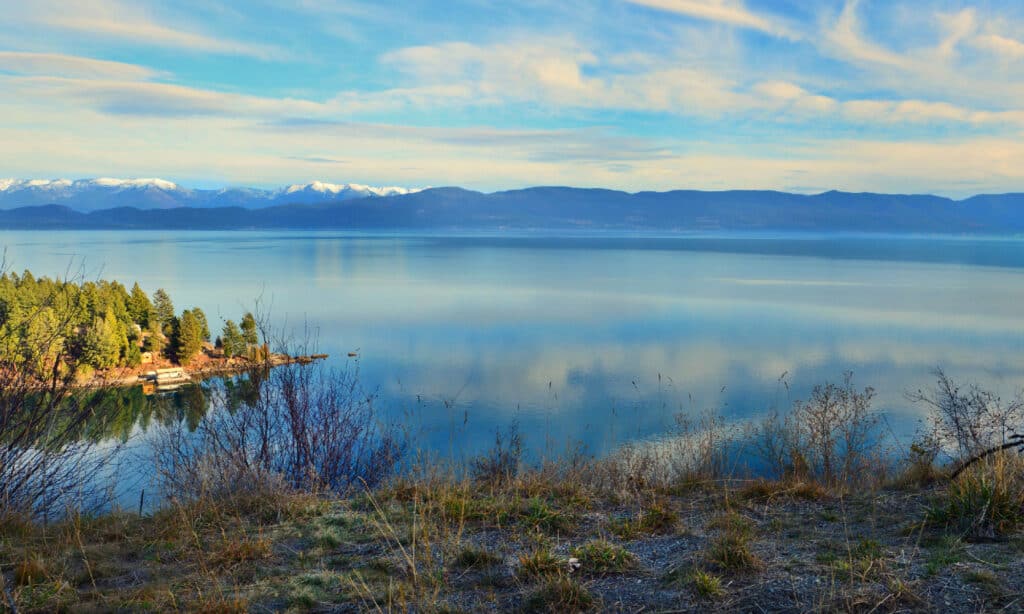
Flathead Lake is one of the largest natural freshwater lakes in Montana.
©iStock.com/11jasons
This lake is a remnant of the ancient Lake Missoula from 15,000 years ago and formed during the last interglacial period. A dam was placed in the 1930s, artificially modifying the lake’s level and providing hydroelectric power.
This Montana lake is about 200 square miles, with about 185 miles of recreational shoreline. There are 13 public access points, with the southern end falling into tribal land. People flock here for the lake swimming, boating, fishing, picnicking, sailing, waterskiing, and camping. There is also a 2,200-acre island only accessible by boat, where you can go to view wildlife and hike. Also, it’s a great spot to view bald eagles.
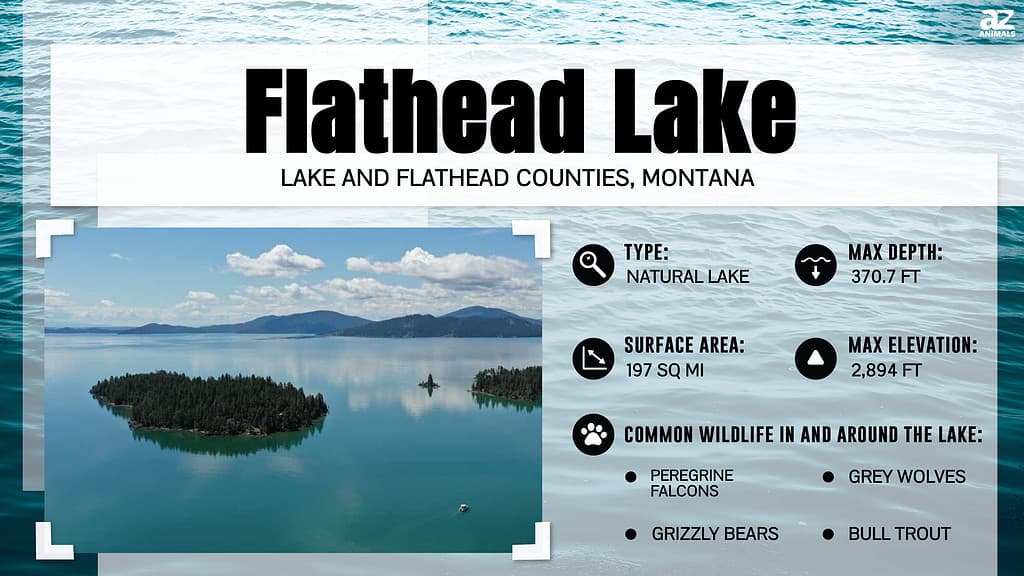
Where Is Flathead Lake on a Map?
Flathead Lake is in Northwest Montana and is one of the largest natural freshwater lakes on the West side of the United States. It is located along the mainline of the Flathead River.
How Deep is Flathead Lake?
Flathead Lake has a maximum depth of 371 feet and an average depth of 164 feet. It is about 30 miles long and 16 miles wide and is one of the cleanest lakes in the world for its size. This lake is similar in surface area to Lake Tahoe, except it lacks its extreme depths, which topple 1600 feet.
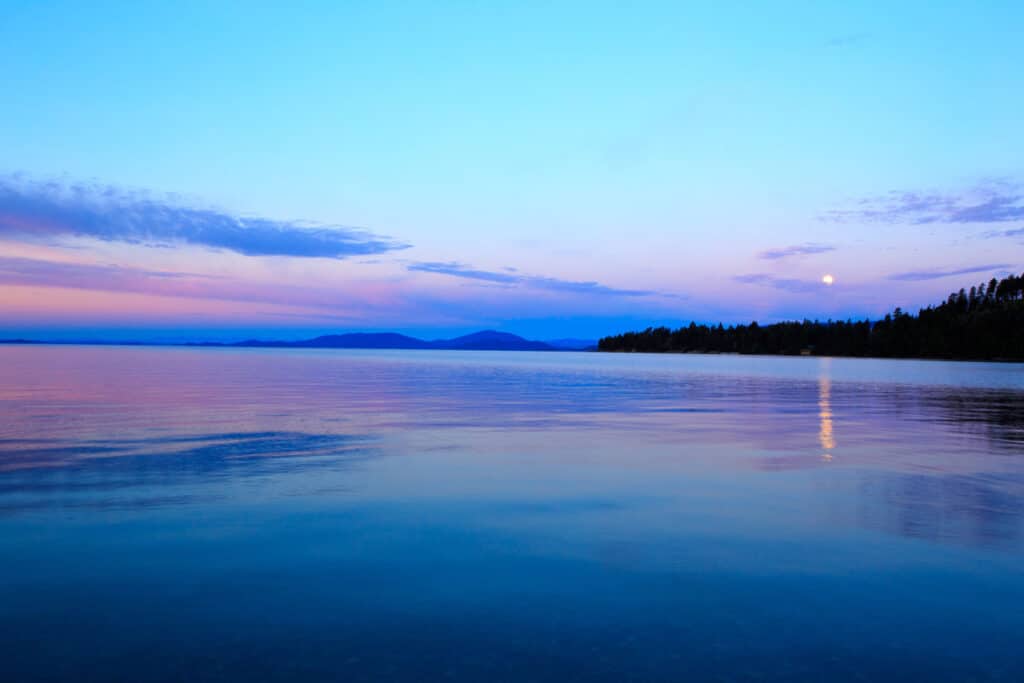
Flathead Lake has a maximum depth of 370 feet.
©iStock.com/highmountainphotography
The lake is 30 miles southwest of Glacier National Park, located in the scenic part of Montana with two highways curving around its shoreline. It’s bordered by two mountains, Mission and Salish, and its region has a mild climate, allowing orchards and vineyards to flourish. Now that you know about Flathead Lake in Montana, discover the deepest lakes in the state and the opportunities they provide.
The Deepest Lakes in Montana
Here are six of the deepest lakes in Montana:
Lake Mcdonald

Lake Mcdonald is 472 feet at its maximum depth, one of the deepest in Montana.
©iStock.com/XIN WANG
At 472 feet, Lake Mcdonald is the largest lake in Glacier National Park, and it’s also one of the deepest in the state (if not the deepest). This lake was formed from glacial carving, and there is evidence from the peaks surrounding the water. Researchers discovered a 200-year-old underwater forest and unearthed relics from the past, like old wood stoves and garden tools. Its waters contain many native fish species, but it’s not an excellent spot for fishing due to the nutrient-poor water. But you can participate in water sports, hiking, and wildlife viewing (bears, moose, and deer).
Tally Lake
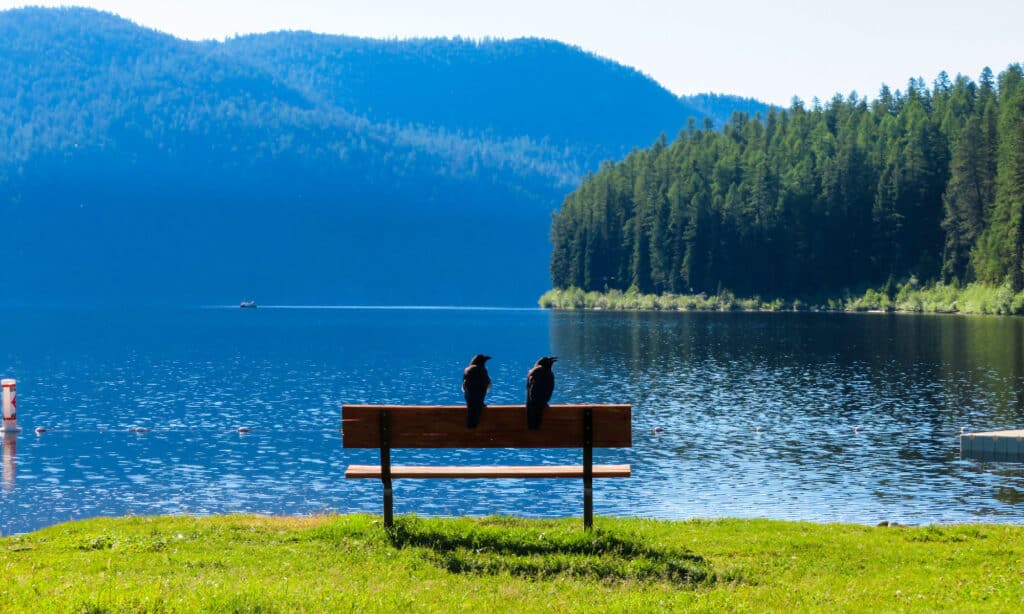
Located in the Northwest region, Tally Lake is a low-elevation freshwater lake.
©Tiffany Sims/Shutterstock.com
Tally Lake is a low-elevation freshwater lake in the Northwest region. It’s 20 miles west of Whitefish and is a popular destination for fishing, boating, swimming, and hiking. Its surface area is over 1200 acres, and with a maximum depth of 445 feet, it is also one of Montana’s most profound bodies of water. Tally Lake sits roughly 3,500 feet above sea level, and because of its high level of tannins, it retains heat better and keeps it warmer. Its water contains many native fish species, and the picturesque scenery with forested mountains flanking the long, narrow valley provides a perfect place to spend an afternoon fishing.
Lake Koocanusa
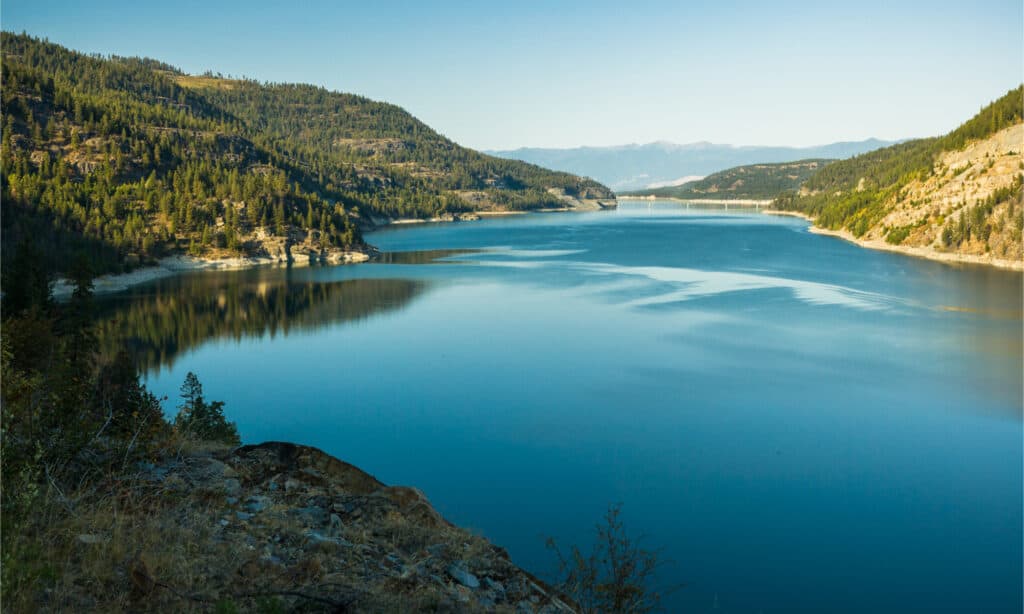
Lake Koocanusa has a maximum depth of 361 feet.
©Laurens Hoddenbagh/Shutterstock.com
Damming the Kootenai River in 1972 created the Koocanusa reservoir, an artificial lake in the Northwest corner of Montana on the Canadian border. The lake is 90 square miles, with 48 miles inside Montana and the other 42 in British Columbia. This reservoir contains 1.65 trillion gallons of water, with an average depth of 300 feet and a maximum depth of 361, making it one of the deepest in the state. The turquoise water stays relatively warm in the summer, attracting visitors for swimming, wakeboarding, canoeing, and kayaking. You can also explore the surrounding areas by hiking and biking.
St. Mary Lake
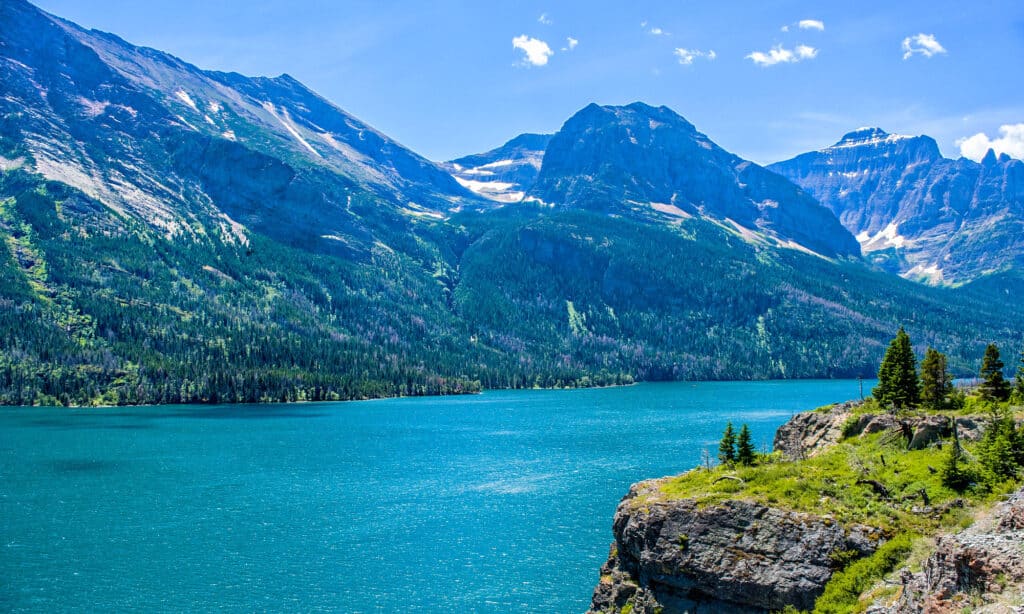
Saint Mary Lake is the second-largest lake in Glacier National Park.
©Evelyn D. Harrison/Shutterstock.com
St. Mary Lake is the second largest lake in Glacier National Park, with a length of almost ten miles and an average depth of 300 feet. Its waters are colder due to its high altitude of 4,484 feet, with temperatures rarely reaching above 50 degrees. During the winter, a four-foot thick layer of ice covers the surface. During warmer months, St. Mary Lake is a hot spot for boating, waterskiing, and fishing, and the surrounding landscape provides some of the best hiking. Check out the cascading waterfalls on the nearby mountains. Also, for any movie lovers, this lake was the opening shot for The Shining.
Whitefish Lake
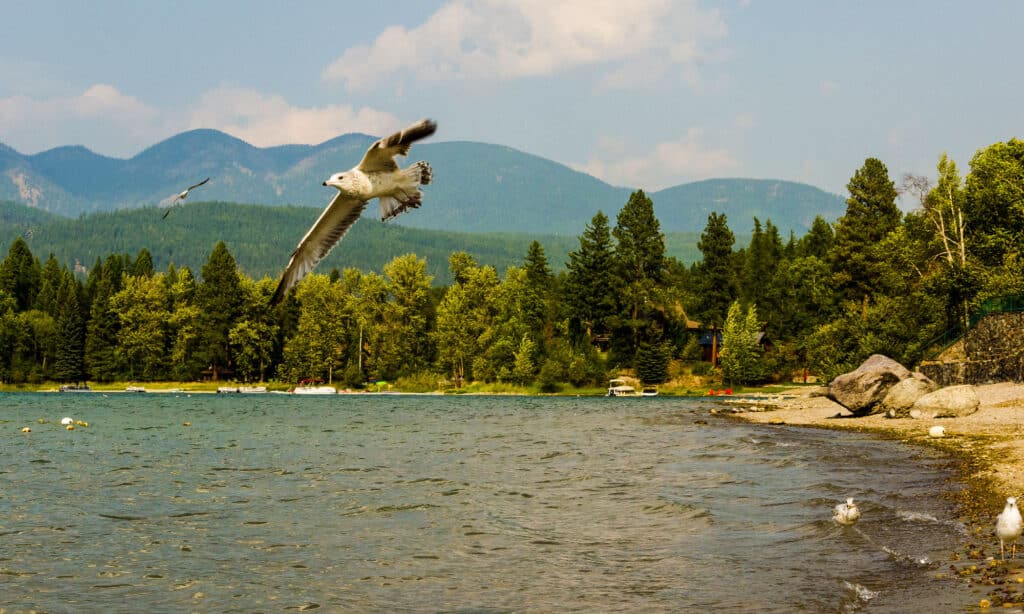
Whitefish Lake has an elevation of almost 3,000 feet.
©Evolga/Shutterstock.com
This lake is northwest of the city of Whitefish and is aptly named for its abundance of mountain whitefish. It has an elevation of almost 3,000 feet, a little over five miles of surface area, and a max depth of 233 feet. This lake has a secluded campground and beach area with mature woodlands that make a perfect summer adventure for hiking and biking. This area has numerous recreational activities like swimming, boating, fishing, camping, and water skiing. Whitefish Lake is also a state park with the nearby Whitefish Mountains offering seasonal skiing and snowboarding opportunities.
Fort Peck Lake
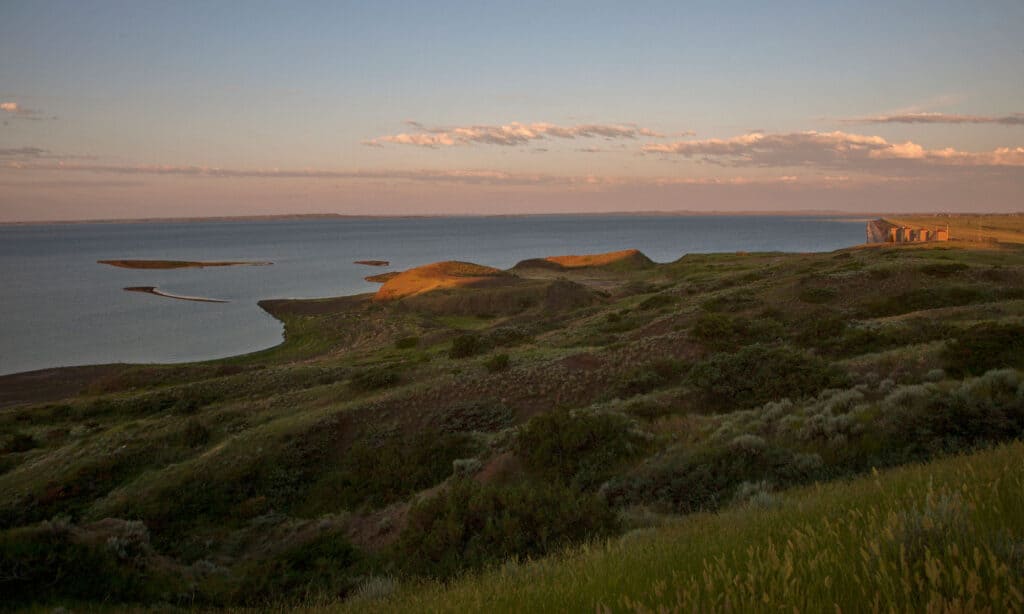
Fort Peck Lake is the fifth largest manmade lake in the United States.
©iStock.com/bobloblaw
This lake is a major Montana reservoir created by dams on the Missouri River. With a surface area of 245,000 acres, it touches six counties in the Eastern prairies of the state. It’s the fifth largest manmade lake in the country, with a max depth of 220 feet, extending 134 miles with over 1,500 miles of shoreline. This reservoir is a popular tourist attraction, with 27 recreational sites and a national wildlife refuge bordering most of its beaches. It was also a filming location for Jurassic Park III.
Animals That Live Around Montana’s Deepest Lakes
The land and water of Montana’s deepest lakes are teeming with life from large to small.
Many species of native fish fill these lakes. The official fish of Montana is the Blackspotted Cutthroat Trout. Others include:
- Freshwater Drum
- Creek Chub
- Mountain Whitefish
- Longnose Sucker
- Rainbow Trout
- Largemouth Bass
The grizzly bear is Montana’s state animal, with the elk in the second spot. This state has all the typical forest animals, from deer and wolves to squirrels and beavers. However, the state houses some unusual animals. The rarest mammal in North America, the black-footed ferret, makes its home in Montana. Also, because of the state’s diversity in climate, you might also encounter the northern scorpion and the rubber boa.
Many birds take to the skies in Montana, including the state bird, the western meadowlark. Keep an eye out for eagles, hawks, and many other species while relaxing by the lake.
The photo featured at the top of this post is © iStock.com/11jasons
Thank you for reading! Have some feedback for us? Contact the AZ Animals editorial team.






